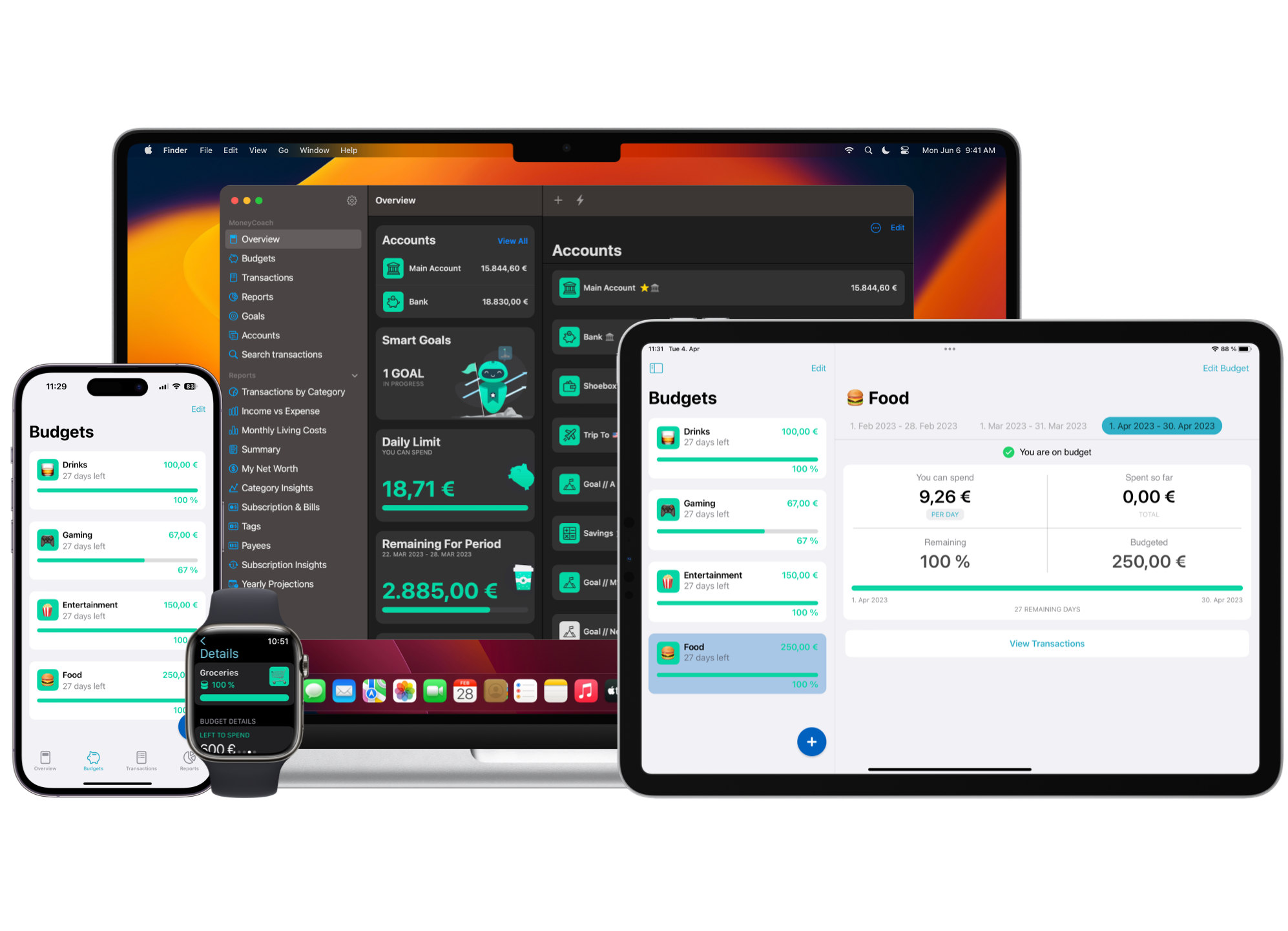
Customer feedback is a crucial component for the continuous improvement and success of any app, including MoneyCoach. By effectively gathering, analyzing, and acting on user feedback, MoneyCoach can enhance its features, improve user satisfaction, and maintain a competitive edge in the personal finance app market. Here are some best practices for managing customer feedback, along with actionable steps and examples.
10 Best Practices for Managing Customer Feedback
Here is a list of best practices for managing customer feedback effectively we use at MoneyCoach:
1. Timing the Feedback Request
Best Practice:
- Request feedback at the right moments to ensure users are engaged and willing to provide valuable insights.
Actionable Steps:
- Post-Interaction Surveys: Trigger feedback requests after significant interactions, such as completing a budget setup or achieving a financial goal.
- Periodic Check-ins: Schedule periodic feedback requests to gauge ongoing user satisfaction and identify areas for improvement.
Example:
- We do this every 3 months, checking how the users are doing and if they have any feedback for us. This is a great way to keep in touch with our users and make sure they are happy with the app.
2. Simplifying the Feedback Process
Best Practice:
- Make it easy for users to provide feedback by simplifying the process and minimizing the effort required.
Actionable Steps:
- Use Visual Clues: Incorporate visual elements like star ratings or emoji reactions to make feedback submission quick and intuitive.
- Short Surveys: Keep surveys concise, focusing on key questions that provide actionable insights.
Example:
- Implement a one-tap rating system where users can rate their experience with a specific feature using a thumbs-up or thumbs-down icon.
3. Offering Multiple Feedback Channels
Best Practice:
- Provide various channels for users to share their feedback, catering to different preferences and ensuring comprehensive data collection.
Actionable Steps:
- In-App Feedback Forms: Integrate feedback forms directly within the app for immediate and contextual feedback.
- Email Surveys: Send follow-up emails with survey links to gather detailed feedback from users who prefer email communication.
- Social Media and Forums: Monitor and engage with users on social media platforms and forums to capture informal feedback and suggestions.
Example:
- Include a feedback button in the app’s settings menu that opens a form where users can share their thoughts or report issues.
4. Personalizing Feedback Requests
Best Practice:
- Personalize feedback requests to make users feel valued and more likely to respond.
Actionable Steps:
- Use User Data: Leverage user data to personalize feedback requests, addressing users by name and referencing their specific activities within the app.
- Tailored Questions: Customize survey questions based on the user’s journey and interactions with the app.
Example:
- Send a personalized email to a user who recently upgraded to MoneyCoach Premium and who opted-in to receive emails, asking for feedback on their experience with the new features.
5. Acting on Feedback
Best Practice:
- Demonstrate that user feedback is valued by taking visible actions based on the insights gathered.
Actionable Steps:
- Prioritize Feedback: Categorize and prioritize feedback to address the most critical issues and popular feature requests first.
- Communicate Changes: Regularly update users on the changes and improvements made based on their feedback through in-app notifications, emails, or blog posts.
- Iterate and Improve: Continuously iterate on the app’s features and user experience based on ongoing feedback.
Example:
- If multiple users report issues with the CSV import feature, we prioritize fixing this bug and inform users once the issue is resolved.
6. Closing the Feedback Loop
Best Practice:
- Close the feedback loop by following up with users who provided feedback, showing appreciation, and informing them of the actions taken.
Actionable Steps:
- Thank Users: Send thank-you messages to users who provide feedback, acknowledging their contribution.
- Update on Progress: Inform users about the status of their feedback, whether it’s being reviewed, implemented, or scheduled for future updates.
Example:
- After fixing a reported bug, send a follow-up message to the users who reported it, thanking them for their input and informing them of the resolution.
7. Encouraging Positive Reviews
Best Practice:
- Encourage satisfied users to leave positive reviews on app stores to boost the app’s reputation and attract new users.
Actionable Steps:
- Prompt Happy Users: After a positive interaction or milestone, prompt users to leave a review on the app store.
- Incentivize Reviews: Offer small incentives, such as access to premium features or entry into a giveaway, for users who leave reviews.
Example:
- After a user successfully achieves a savings goal, prompt them with a message congratulating them and asking if they would like to leave a review.
8. Leveraging Negative Feedback
Best Practice:
- Use negative feedback as an opportunity to improve the app and turn dissatisfied users into loyal customers.
Actionable Steps:
- Acknowledge Issues: Respond promptly to negative feedback, acknowledging the user’s concerns and apologizing for any inconvenience.
- Offer Solutions: Provide solutions or workarounds for the issues reported and assure users that their feedback is being taken seriously.
- Follow Up: Follow up with users after addressing their concerns to ensure they are satisfied with the resolution.
Example:
- If a user leaves a negative review about a confusing feature, respond with a detailed explanation and offer a one-on-one support session to help them understand the feature better.
9. Analyzing Feedback Data
Best Practice:
- Systematically analyze feedback data to identify trends, common issues, and areas for improvement.
Actionable Steps:
- Categorize Feedback: Organize feedback into categories such as bugs, feature requests, and user experience issues.
- Identify Patterns: Look for patterns and recurring themes in the feedback to prioritize the most impactful changes.
- Use Analytics Tools: Utilize analytics tools to track feedback metrics and measure the effectiveness of implemented changes.
Example:
- Use a feedback management tool to categorize and analyze user feedback, identifying that many users find the onboarding process confusing and prioritizing improvements in this area.
10. Engaging with the User Community
Best Practice:
- Build a strong user community by actively engaging with users and fostering a sense of belonging.
Actionable Steps:
- Community Forums: Create and maintain community forums where users can share feedback, ask questions, and interact with each other.
- Social Media Engagement: Actively engage with users on social media platforms, responding to comments and messages promptly.
- User Events: Host webinars, Q&A sessions, and other events to connect with users and gather real-time feedback.
Example:
- Host a monthly webinar where users can ask questions, provide feedback, and learn about upcoming features directly from the MoneyCoach team.
Conclusion
By implementing these best practices for customer feedback, we at MoneyCoach can continuously improve our app, enhance user satisfaction, and build a loyal user base. Effective feedback management involves timely requests, simplifying the process, offering multiple channels, personalizing interactions, acting on feedback, closing the loop, encouraging positive reviews, leveraging negative feedback, analyzing data, and engaging with the user community. By following these actionable steps and examples, MoneyCoach can ensure that user feedback drives meaningful improvements and contributes to the app’s long-term success.




